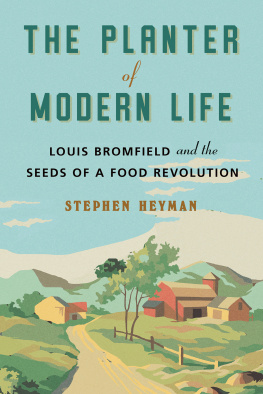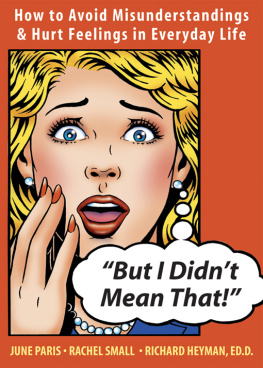Stephen Heyman - The Planter of Modern Life
Here you can read online Stephen Heyman - The Planter of Modern Life full text of the book (entire story) in english for free. Download pdf and epub, get meaning, cover and reviews about this ebook. year: 2020, publisher: W. W. Norton & Company, genre: Non-fiction / History. Description of the work, (preface) as well as reviews are available. Best literature library LitArk.com created for fans of good reading and offers a wide selection of genres:
Romance novel
Science fiction
Adventure
Detective
Science
History
Home and family
Prose
Art
Politics
Computer
Non-fiction
Religion
Business
Children
Humor
Choose a favorite category and find really read worthwhile books. Enjoy immersion in the world of imagination, feel the emotions of the characters or learn something new for yourself, make an fascinating discovery.
- Book:The Planter of Modern Life
- Author:
- Publisher:W. W. Norton & Company
- Genre:
- Year:2020
- Rating:3 / 5
- Favourites:Add to favourites
- Your mark:
- 60
- 1
- 2
- 3
- 4
- 5
The Planter of Modern Life: summary, description and annotation
We offer to read an annotation, description, summary or preface (depends on what the author of the book "The Planter of Modern Life" wrote himself). If you haven't found the necessary information about the book — write in the comments, we will try to find it.
The Planter of Modern Life — read online for free the complete book (whole text) full work
Below is the text of the book, divided by pages. System saving the place of the last page read, allows you to conveniently read the book "The Planter of Modern Life" online for free, without having to search again every time where you left off. Put a bookmark, and you can go to the page where you finished reading at any time.
Font size:
Interval:
Bookmark:

The Planter of
Modern Life
LOUIS BROMFIELD AND THE SEEDS
OF A FOOD REVOLUTION
Stephen Heyman

W.W. NORTON & COMPANY
Independent Publishers Since 1923
Almost a century ago, in a market town some 30 miles north of Paris, there lived a young American who had leased an old rectory and converted it into a comfortable home for his family. He installed a giant gramophone and an ornate bar, furnished the place with antiques, painted exotic jungle scenes on the walls. Vogue photographed the interiors, making the house look airy and spacious, when in fact it could barely accommodate its inhabitants: the man, his wife, their three young daughters, the nanny, the cook, the secretary, the gardener, and the pet animals, which included a Scottish terrier, an Indian mongoose, and a pony named Peter.
Among ordinary people in Europe and America, the man was famous for the novels he wrote. Among famous people, however, he was known for his flowers. Every Sunday, he hosted a party in his garden, which stretched out over 2 acres along a narrow river lined with linden and poplar trees. Most of the guests were uninvited. They came from Paris, although only a few were French. They arrived in Rolls-Royces, Bugatti roadsters, and Fords from the American embassy. Each week somebody new turned up: an Indian maharani, a White Russian prince, a scattering of Rothschilds. They mingled with the regulars: foreign correspondents, fashion designers, flower breeders, art collectors, movie stars, maybe a few spies. They served themselves from a lopsided buffet, pouring Champagne and brandy, digging into potato salad, goose-liver pt, slices of charcuterie, finishing off with coffee and cake and strawberries from the garden. Then they sat on the grass, smoking, admiring the flowers: the marigolds, the blue Himalayan poppies, the hybrid musk roses that hung in bushes from the little wooden bridge spanning the river.
A few of them took the time to study their host, and werent quite sure what to make of him. His clothing, one French visitor noted, combined the shirt of a gangster, the trousers of a student, and the slippers of a peanut salesman. His interests were similarly mismatched. His friend Janet Flanner, Paris correspondent for The New Yorker, described his conversation as a mixture of old-fashioned French, the latest Broadway slang, dukes and duchesses first names, discussions on farm manures, Paris politics, Bombay palace intrigues, modern European painting, Golden Bantam corn, the operas of Richard Strauss, and the best way to cook hamburgers.
He was in his mid-thirties then. Even those who cared nothing for his two great passionsbooks and gardenscould tell that, in pursuit of them, he had already learned something valuable about life. He may not have been a literary genius like the newspapers claimed, but he had acquired, as one admirer put it, a genius for living. Exactly where this genius came from was unclear to his friends, and where it would take him they certainly could not imagine as they sipped ros or swam in the river, trading gossip and talking up the next novel they would fail to write, or the long vacation they would soon take, inhaling all the fragrant possibilities of an easy, expatriate existence that was soon to disappear forever.

If Louis Bromfield ever appears in a book today, he is shoved into parentheses or buried without ceremony in a footnote. If we remember him at all, it is only as a character in somebody elses story. As Humphrey Bogarts best man, say, or Doris Dukes lover. As Gertrude Steins protg or Edith Whartons gardening guru. As Ernest Hemingways enemy or Eleanor Roosevelts pain in the ass. What is surprising is not that he has his own story to tell, but that, six decades after his death, that story suddenly feels important.
Bromfield was first, if not foremost, a novelist. He belonged to Steins Lost Generation, the group of American artists who came of age in the 1920s, and in outline his biography conforms perfectly to type: He had the restless, middle-class, Midwestern boyhood; the unfinished Ivy League education; the adventure under fire as a World War I ambulance driver; the sojourn in Paris. There was alcohol, infidelity. There was a rapid rise, a slow, pathetic fall, and then, in his case, a precipitous drop into obscurity. Today he is little read and, outside of northeastern Ohio, hardly known. That his fame would vanish would probably not have upset him. The most important thing in life is the pleasure you can extract from it, he told the society chronicler Lucius Beebe in 1935, while nursing a rye whiskey before his latest play opened on Broadway. Only the young and foolish worry about posthumous reputations.
The point of this book is not to argue for a fresh evaluation of Bromfields literary work, even though he was, at least in commercial terms, among the most successful writers of his generation. His 1926 novel, Early Autumn, won the Pulitzer Prize. In that decade he was regarded more highly by the literary establishment than Fitzgerald or Hemingwaya fact that would later baffle critics. Millions of his books were printed in every major language. Most of his thirty-odd works became bestsellers, and many were adapted by Hollywood, including The Rains Came (1939), an Orientalist fantasia set in India that won the first Academy Award for special effects.
In politics, too, Bromfield made his mark: rescuing American volunteers from the Abraham Lincoln Brigade who were trapped in prisons or hospitals at the end of the Spanish Civil War; funneling money to Free French forces during World War II; hectoring his many powerful friends in Washingtonincluding a dismissive Eleanor Rooseveltto do more to stop the Nazi slaughter of European Jews; and chairing committees that would help support the founding of the state of Israel.
Such political and literary exploits are the bread and butter of biographies. But this is not a story about a popular writer or a celebrity host or an influential pundit. Yes, Bromfield was all those things, but, above everything else, he was a farmer. He made his greatest impact not on the page but in the soil. He devoted his life to protecting and reviving this precious resource, a resource that was as mistreated and as misunderstood in his time as it is in our own. What Bromfield said in 1942 is perhaps even truer today: Most of our citizens do not realize what is going on under their very feet.

Long before climate science and climate skeptics, before fracking and Drill, Baby, Drill and the BP Oil Spill, before food co-ops and the Whole Earth Catalog, before Earth Day and Rachel Carsons Silent Spring, there were environmental problems in this country and environmentalists who tried to fix them. They called themselves conservationists. They had seen, in their own backyards, man-made environmental disasters on par with some of the darker predictions in the latest UN Climate Report: floods, widespread soil erosion, apocalyptic dust storms, vanishing wildlife, and mass migration. By trade they were farmers and scientists, writers and bureaucrats, businessmen and social theorists. Their motivations were different, but most of them were pushed into action by the Dust Bowl and the Great Depressionthe Dirty Thirties, as these years are sometimes known. The books they wrote would go on to inspire the first modern environmentalists, the earliest self-described organic farmers, the avant-garde in the ongoing campaign for clean water, clean air, and a healthier, more sustainable food system.
Next pageFont size:
Interval:
Bookmark:
Similar books «The Planter of Modern Life»
Look at similar books to The Planter of Modern Life. We have selected literature similar in name and meaning in the hope of providing readers with more options to find new, interesting, not yet read works.
Discussion, reviews of the book The Planter of Modern Life and just readers' own opinions. Leave your comments, write what you think about the work, its meaning or the main characters. Specify what exactly you liked and what you didn't like, and why you think so.











